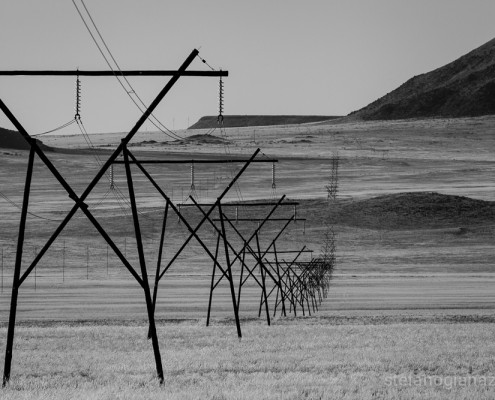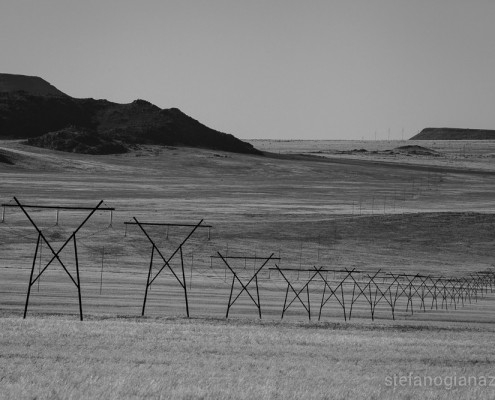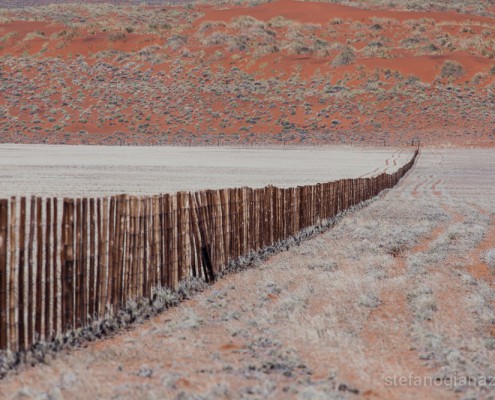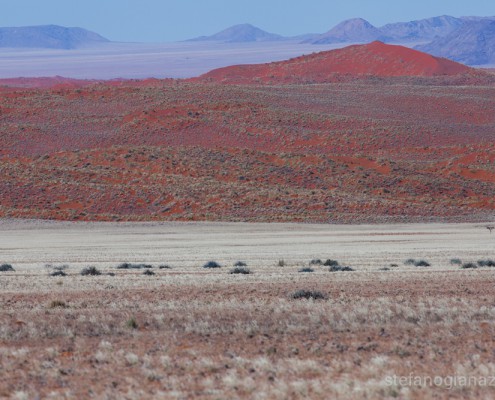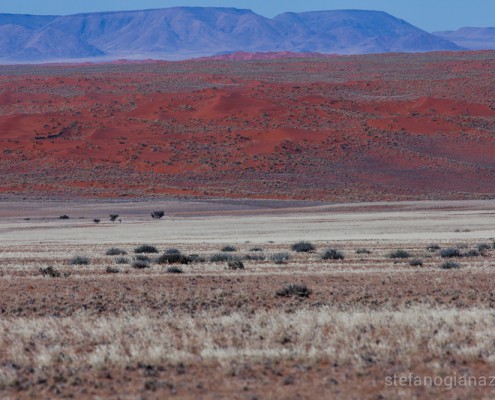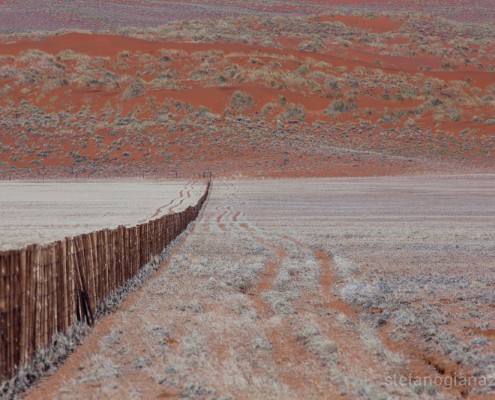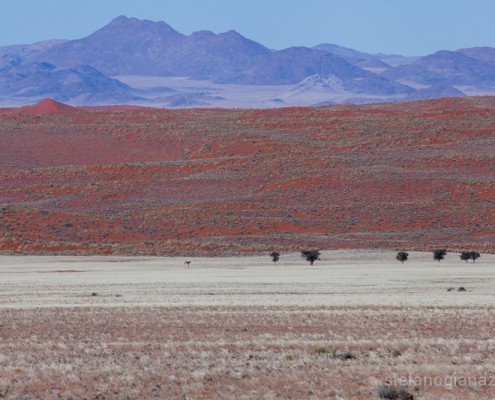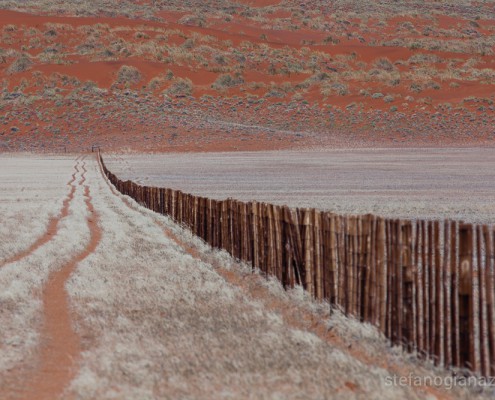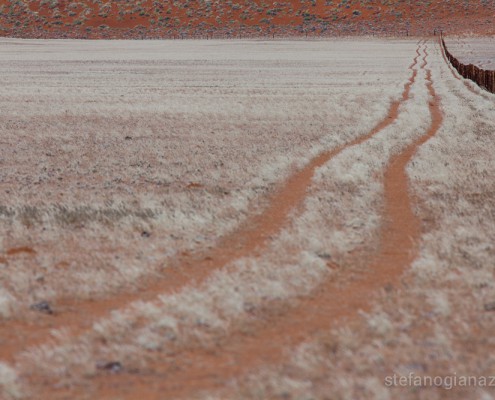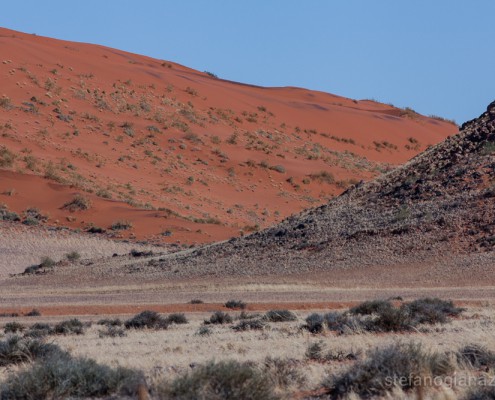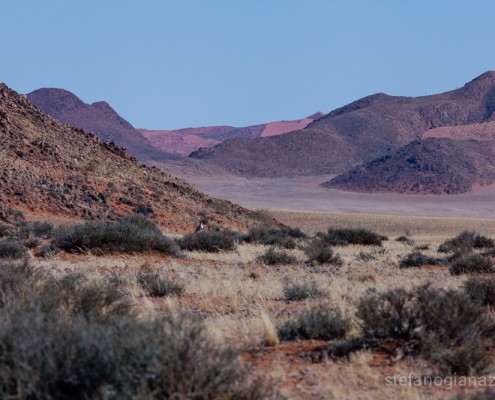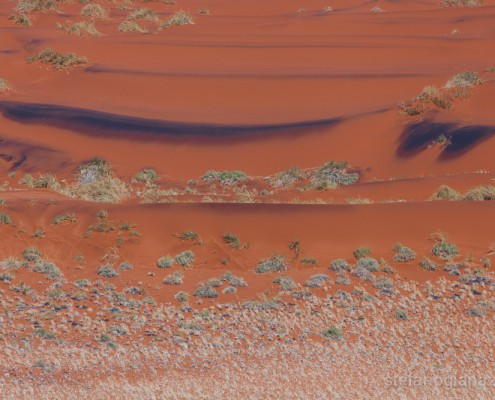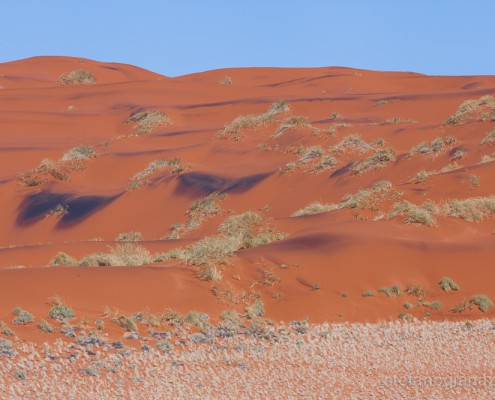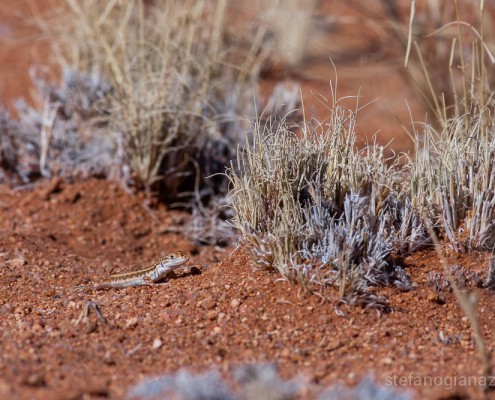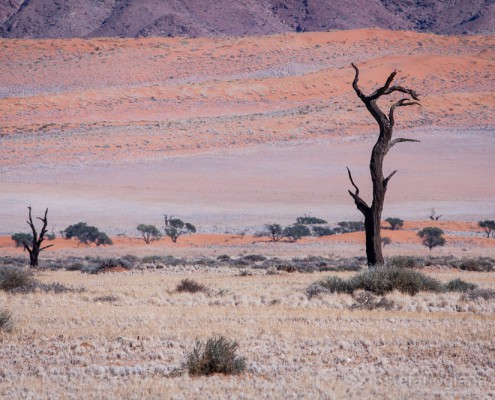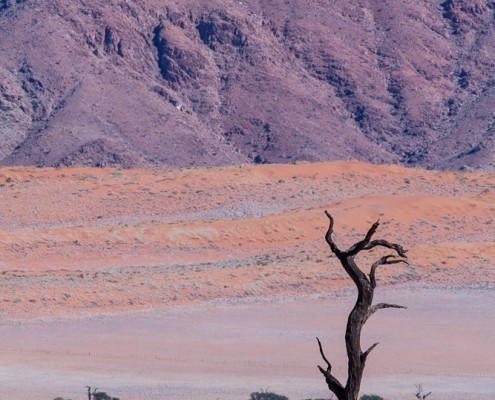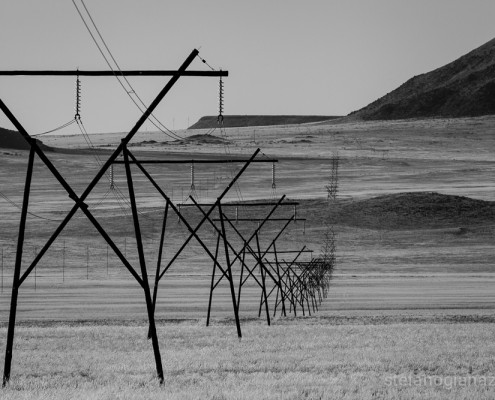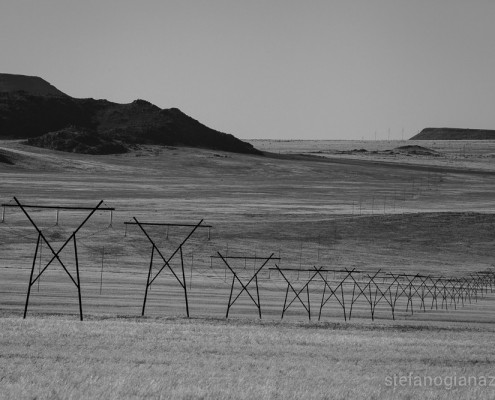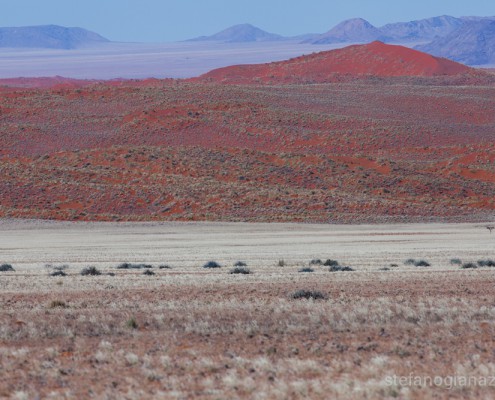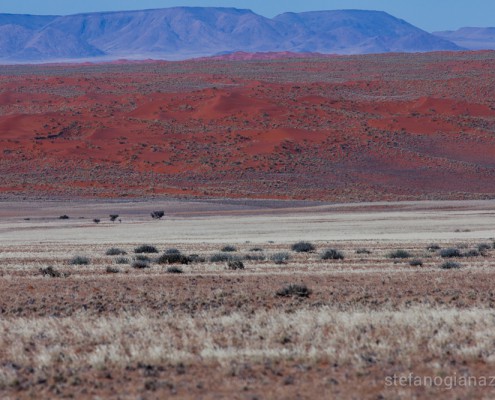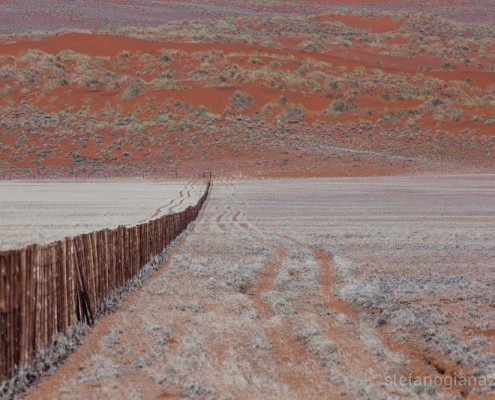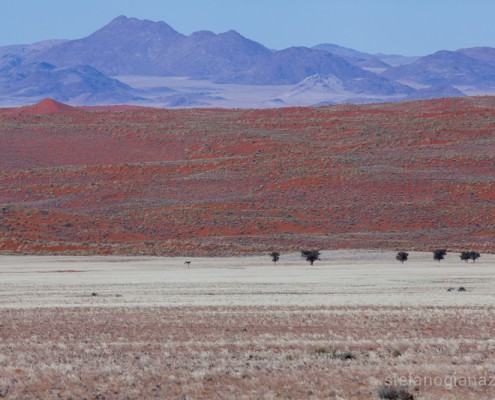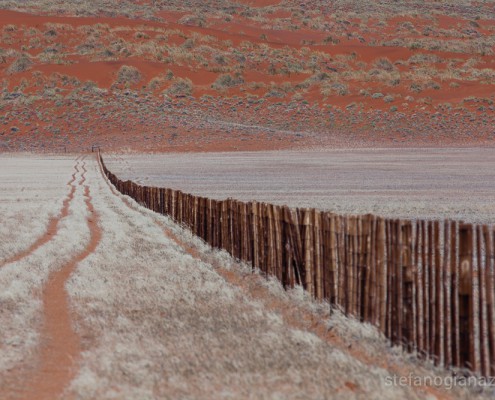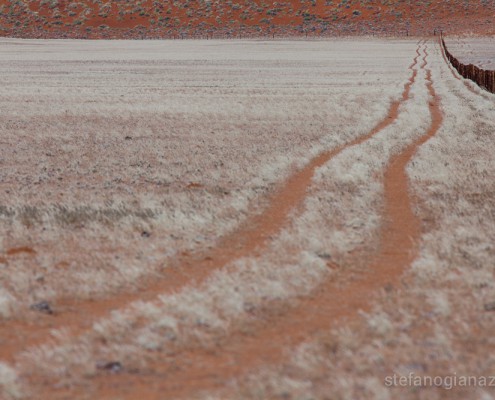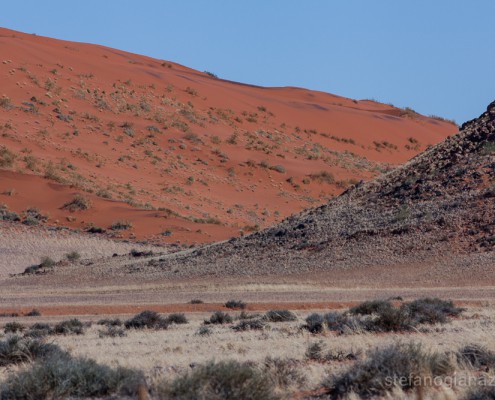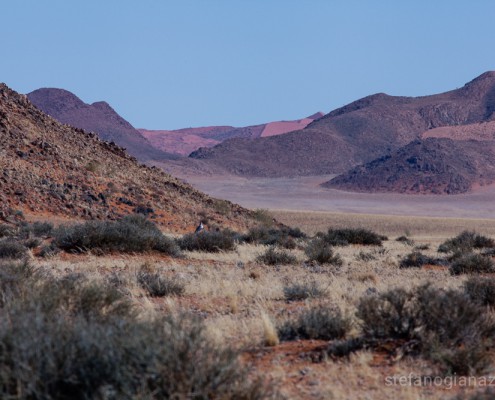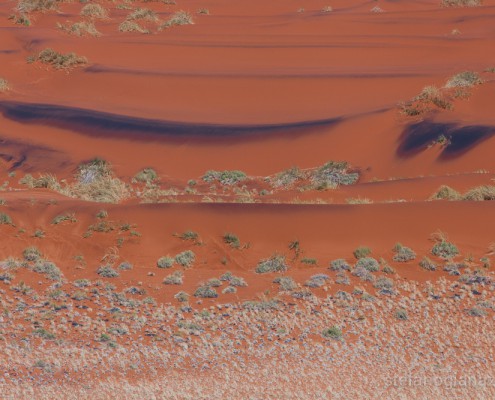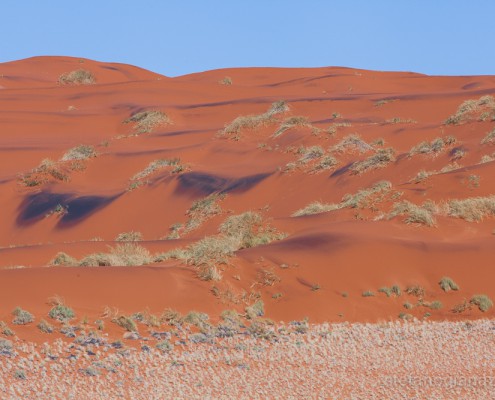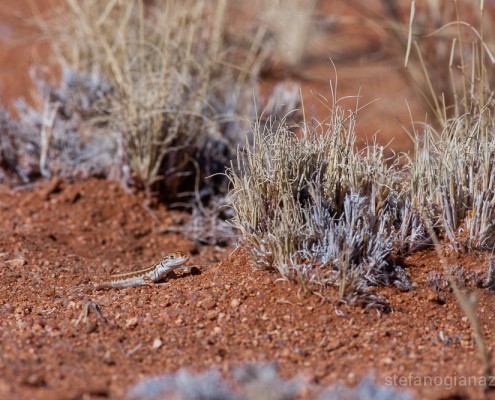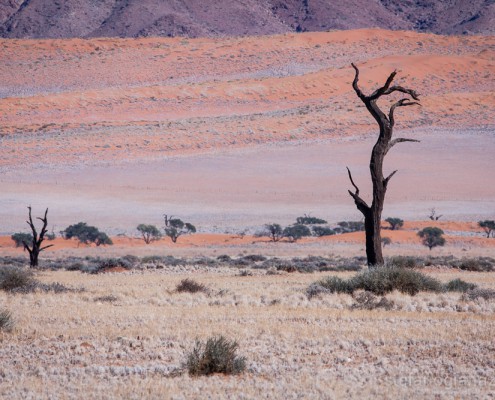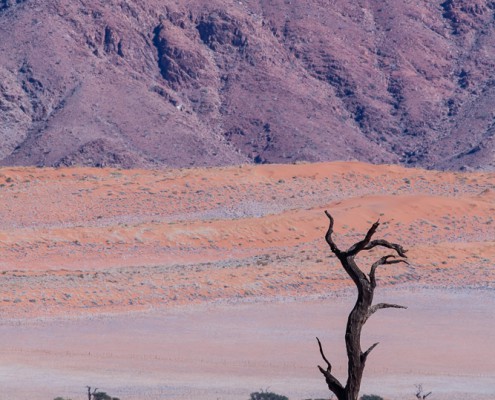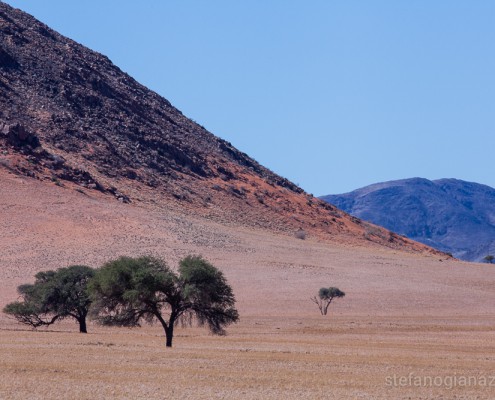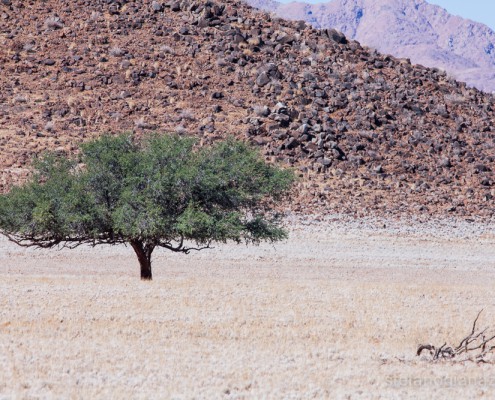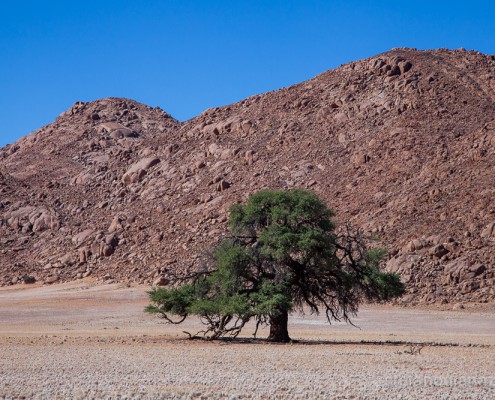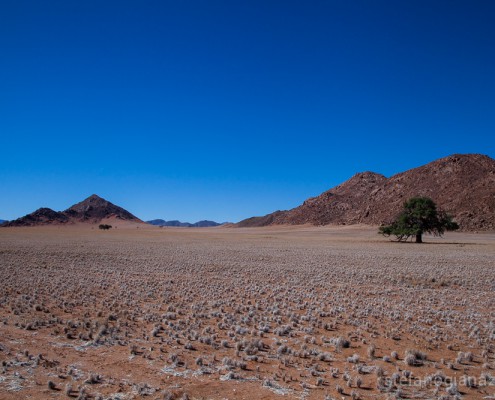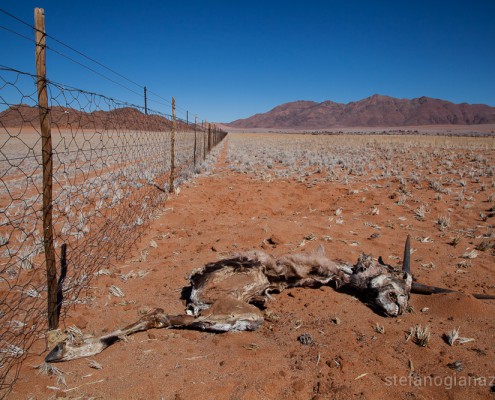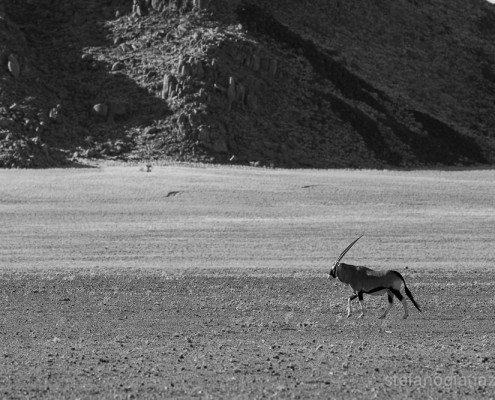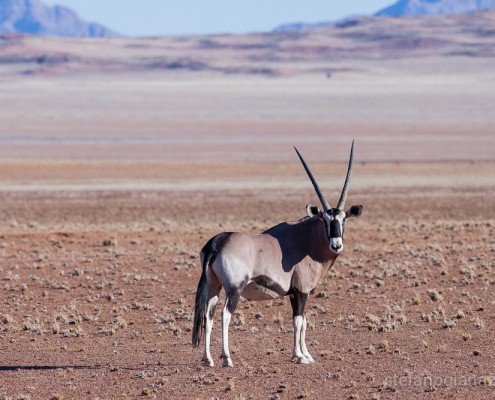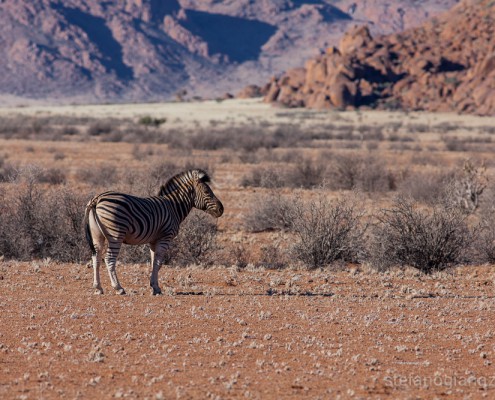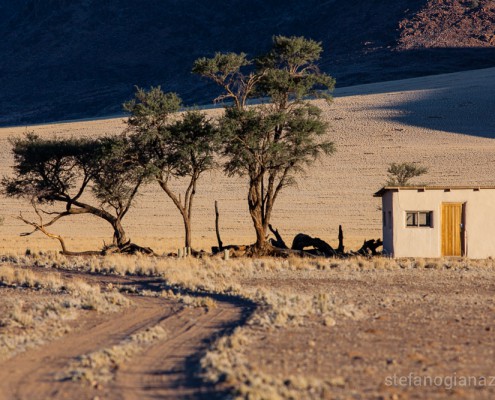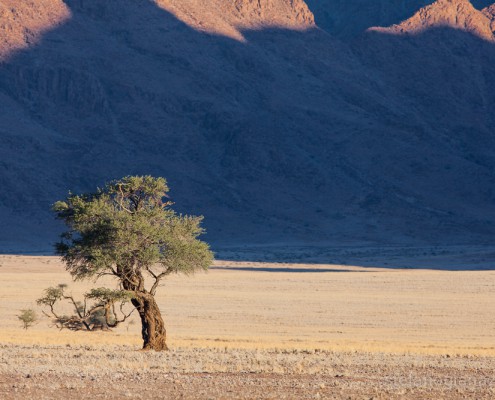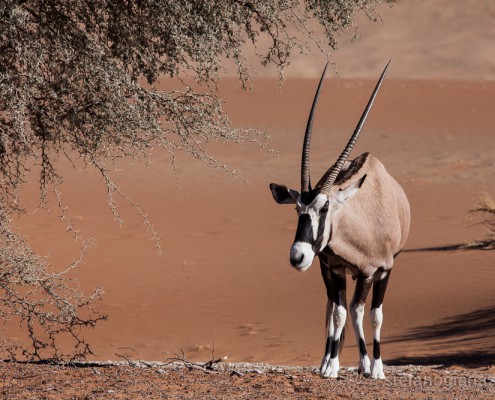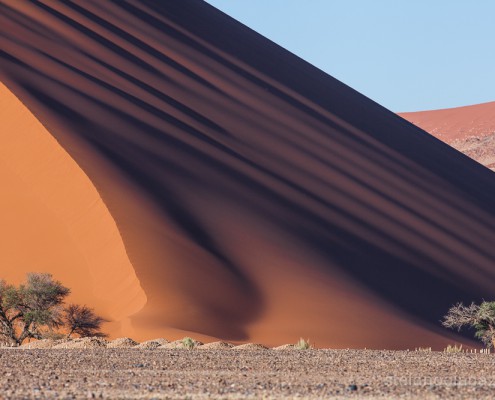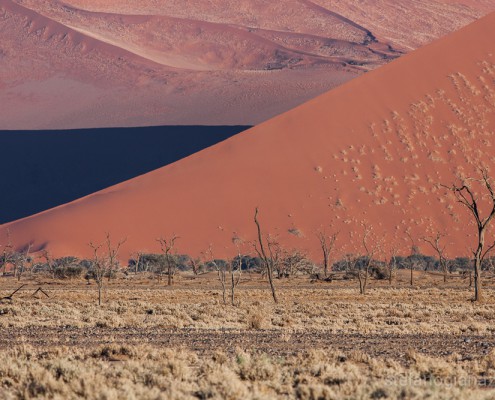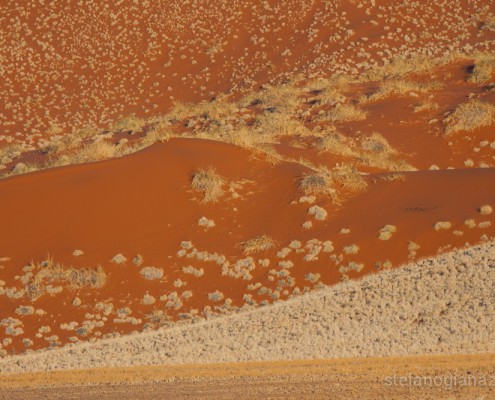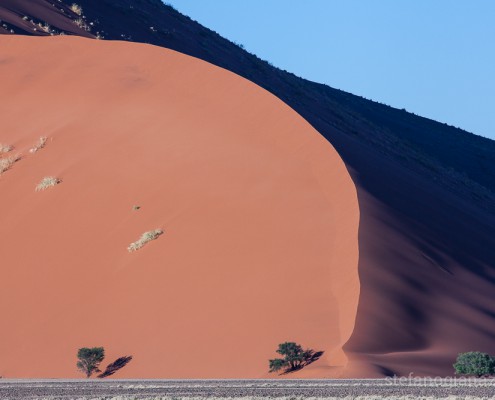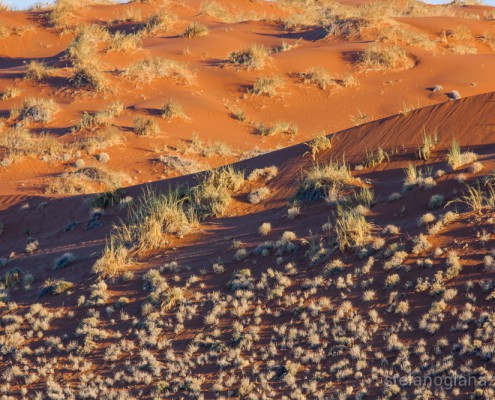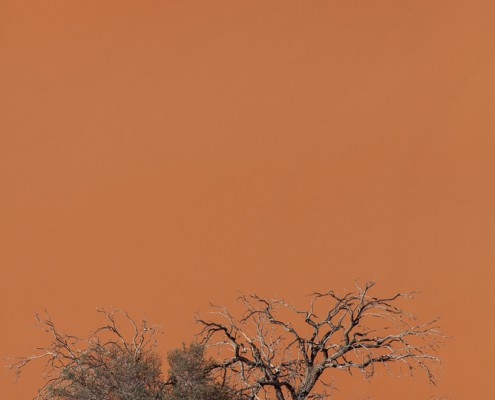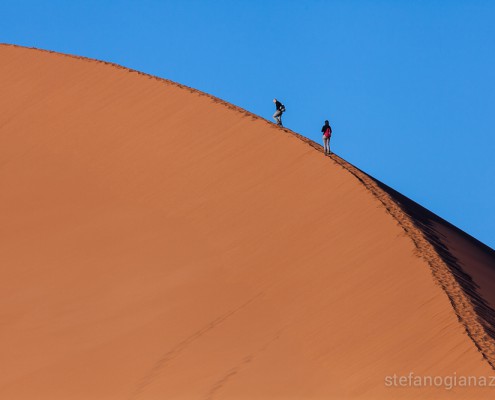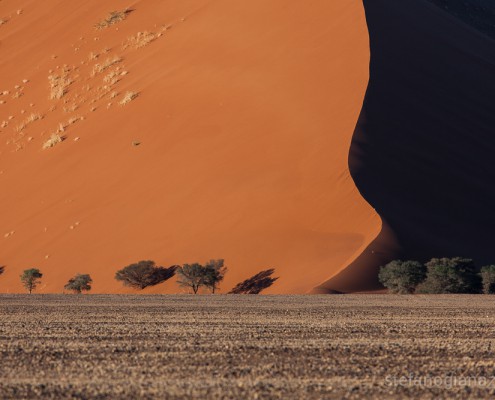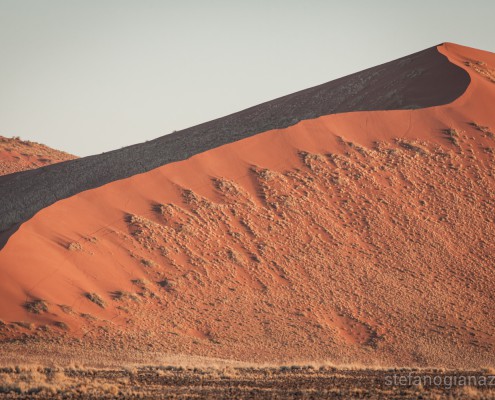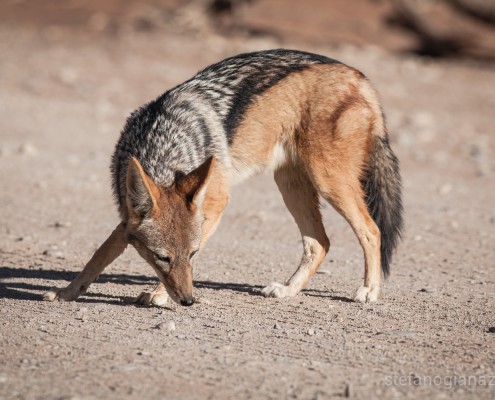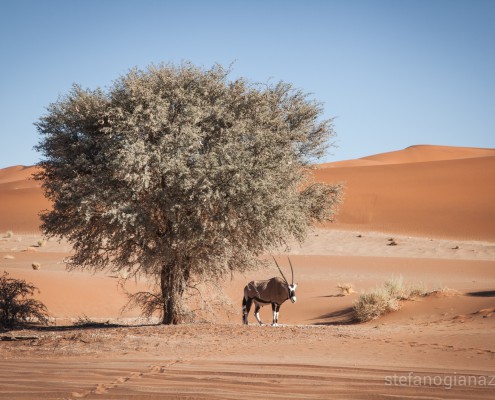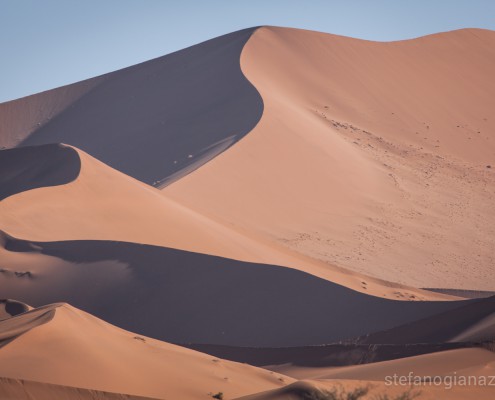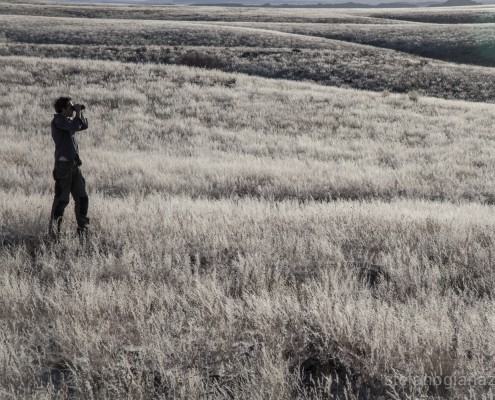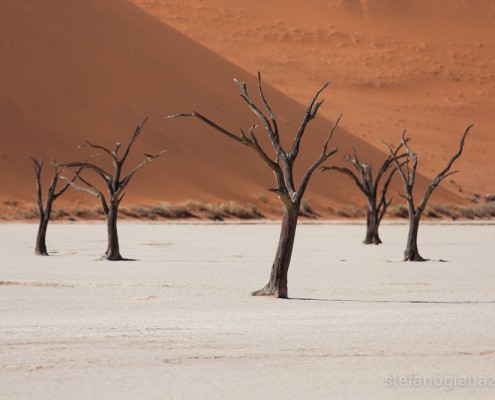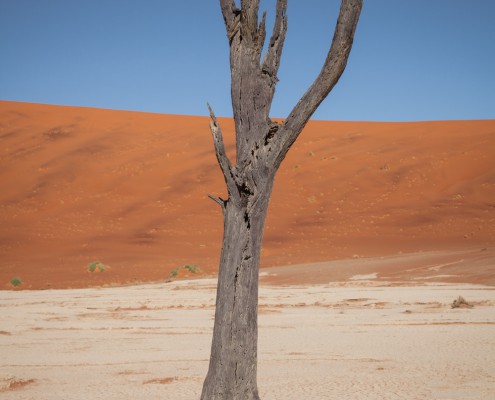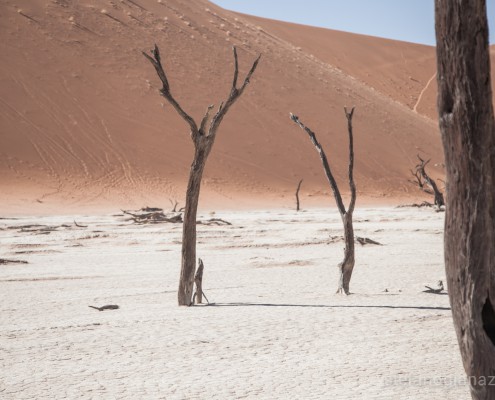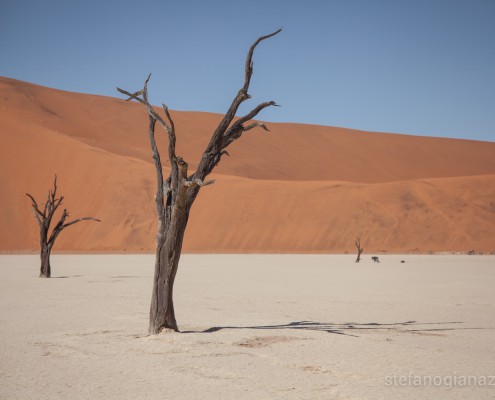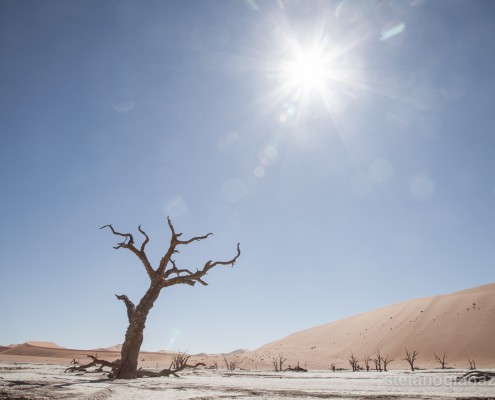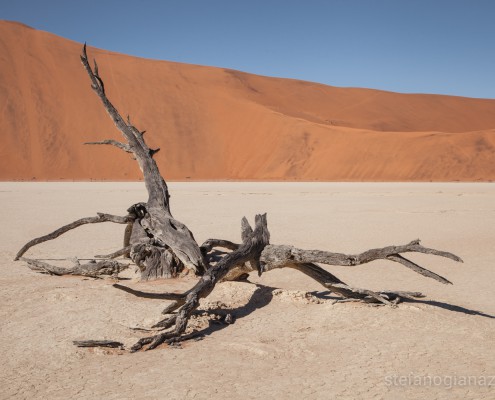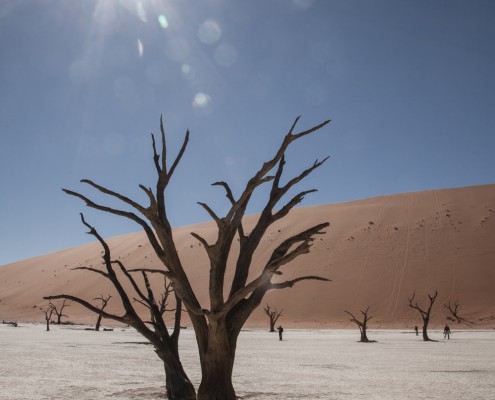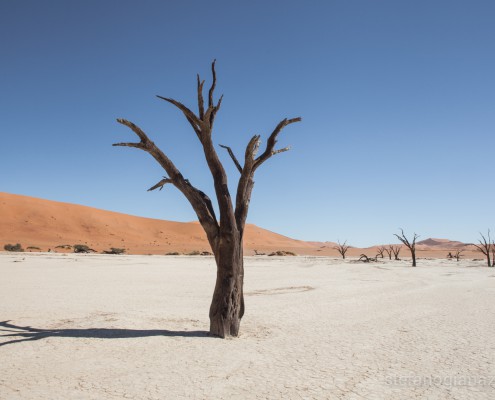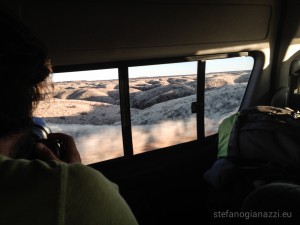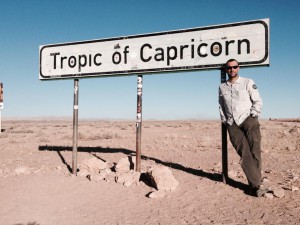Towards Sossusvlei (June 3)
I’m writing this post several days after the Namibian Experience. Anyway, i can tell for sure that one of the things which is actually well-impressed in my memory is the TIK-TAK-TOK-TAK of the small stones raised up against the van bottom by the 120 km/h run over the traditional dirt-no-concrete namibian roads. I suppose i shall now have a special mention for Philip’s Toyota Quantum that – in my opinion – is really made of Depleted Uranium as it is virtually indestructible.
June 3 started with a long run Towards Sossusvlei; we jumped into the van at 08:00 and arrived at the Welteverde Guest Farm at 18:00. In between, panoramas, dust, Mountain Zebras (Equus zebra), dust, pepper trees (Schinus Molle), dust, a Smith’s Desert Lizard (Meroles Ctenodactylus), dust, a Cape Hare (Lepus Capensis) and lots of high voltage pylons.
The Namib-Naukluft National Park and Sossusvlei (June 4)
04:50. The moment the alarm started annoying me. Anyway, my craving for coffee and the idea of finally being to the place Frans Lanting took his famous shoots for National Geographic pushed me out of bed (despite a sleepless night). The Namib-Naukluft National Park of Namibia includes part of the Namib Desert (the world’s oldest desert) and the Naukluft mountain range, with an overall area of 49,768 square kilometers. Its most famous area is Sossusvlei, the main touristic attraction in Namibia.
Deadvlei
Inside the Park, near the famous pan of Sossusvlei, there is Deadvlei, a white clay pan which name means “dead marsh” (English dead + Afrikaans vlei, a lake or marsh in a valley between dunes) which is a a desiccated vlei, surrounded by the highest sand dunes in the world. The trip to the Vlei (Toyota + foot) is very impressive, painted and oryx-endowed. You will also met Jackals waiting for food (even it is clearly forbidden to feed the animals) and crows drinking from tubes for cool water drop by drop in the public park (you will have to use park vehicles for the last chunk of road and go by foot up the the dunes to the Dead Vlei). It is known that the clay pan was formed after rainfall, when the Tsauchab river flooded, creating shallow pools where the abundance of water allowed camel thorn trees to grow. When the climate changed, drought hit the area, and sand dunes encroached on the pan, which blocked the river from the area. The trees died, as there no longer was enough water to survive. The remaining skeletons of the trees, which are believed to be about 900 years old, are now black because the intense sun has scorched them. Though not petrified, the wood does not decompose because it is so dry (source WikiPedia).
The last famous words
The evening before Philip, our guide, told us that he really does not like to drive in dark after sunset. Of course he does, it is possible to find any kind of animal in the middle of the road, and you bet you will have to spend all night in your car in case of accidents, because no one will rescue you. Anyway, lots of kilometers and dozens of wonderful panoramas. We also went trough a road massacre, where many specimens of Armored Cricket (Acanthoplus Discoidalis) were eating dead specimens of the same species, only to be splattered by cars and being eaten themselvs by their… uhm… friends.
And… Guess when we did arrive in Swakopmund, the city on the coast of western Namibia, capital of the Erongo administrative district with 42.000 inhabitants and covering 193 square kilometres? Yes, in the evening, in the dark 😉
We corrupted Philip and made him forgive us by means of a huge amount of fish and beer at the Kucki’s Pub Seafood and Grill Restaurant.

